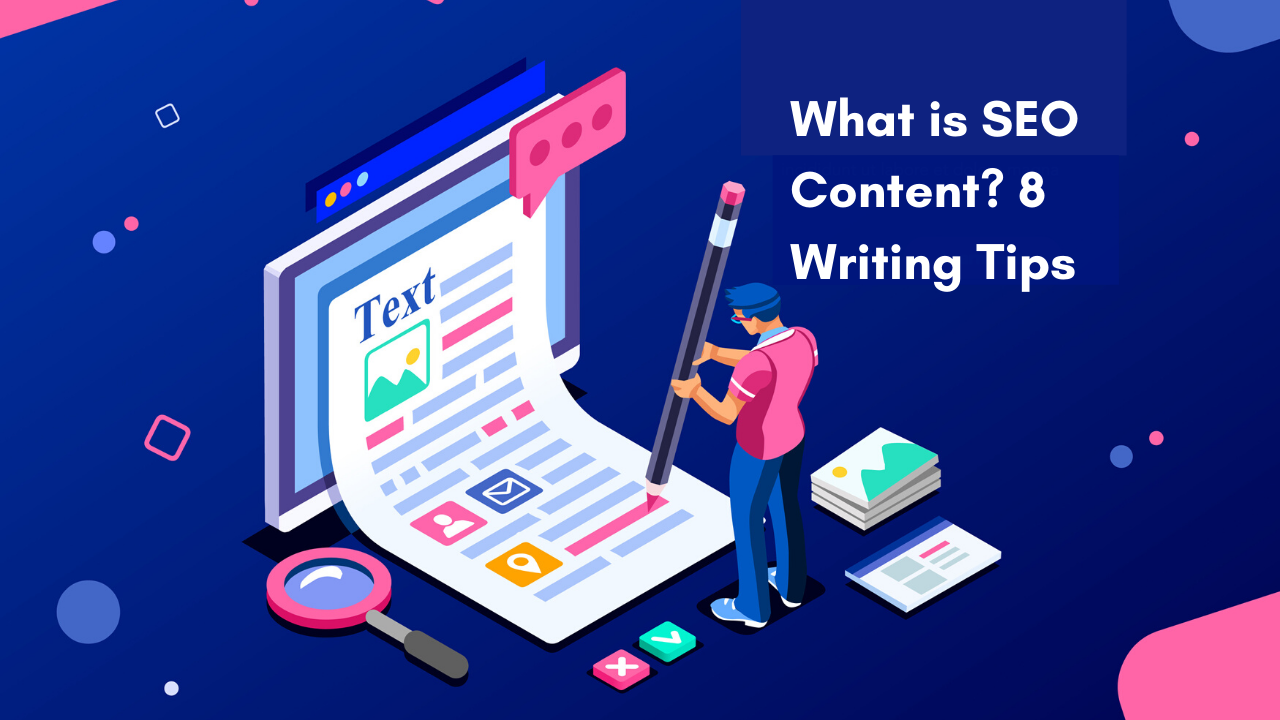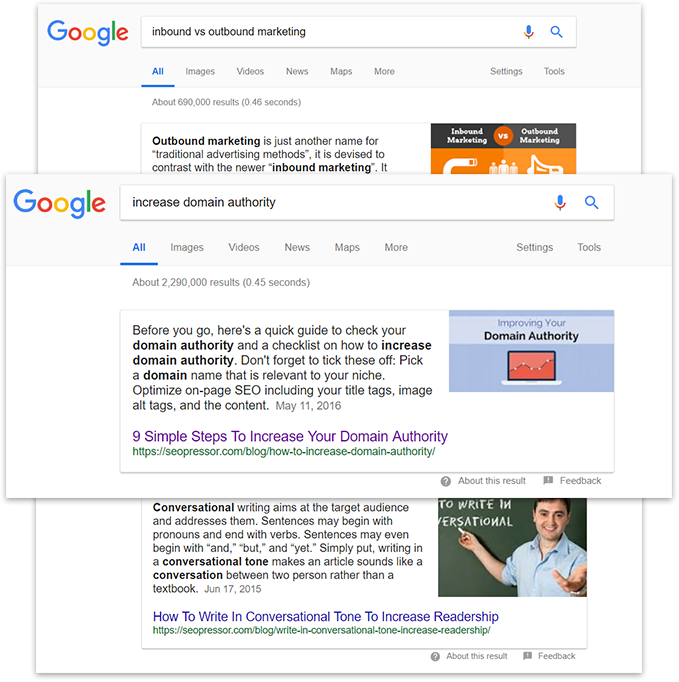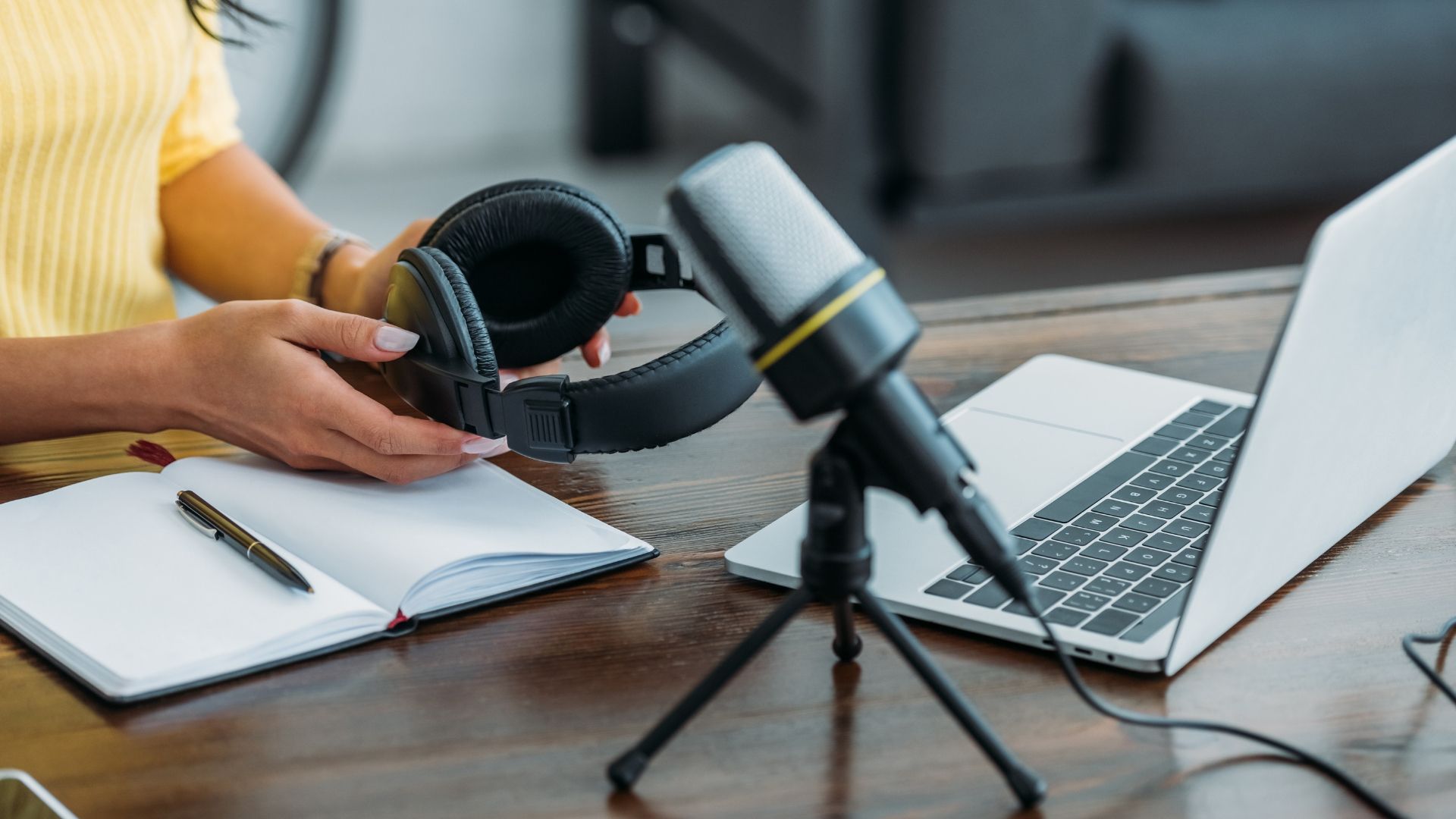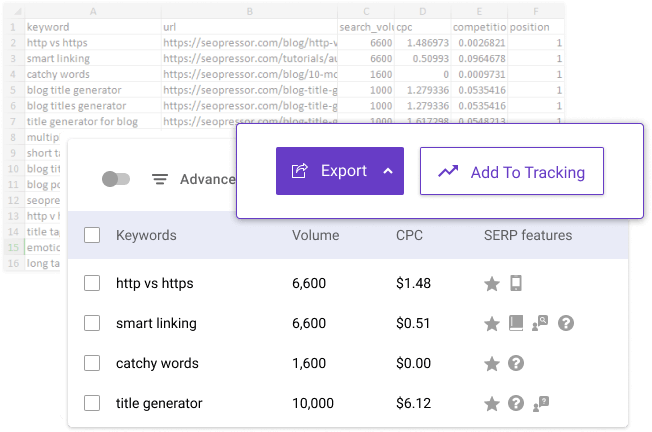Steph W. from SEOPressor


...help you check your website and tell you exactly how to rank higher?


92
score %
SEO Score

Found us from search engine?
We rank high, you can too.
SEOPressor helps you to optimize your on-page SEO for higher & improved search ranking.
By vivian on September 1, 2020

We all know from Bill Gates that “Content is King” — however nowadays creating compelling and customer-centric content is no longer enough to win rankings and shoppers.
Without perfectly SEO optimized content, even the best content can fail to perform in natural search. After all, what’s the point of creating content that’s useful if your target audience can’t find it?
That’s the reason why you need to create SEO content, but don’t mistake it as just inserting your keywords for a certain number of times in your content, that can only be further away from the truth.
In this post, you will be going through some of the content strategies we personally use here at SEOPressor and understand the inside process we use to create our content to get results like these.

Before we begin, here’s a quick definition.
The term SEO content can be applied to any content that was created in order to earn a high ranking on Google’s SERP.
SEO content writing then is to create content that is aimed to rank for targeted searches and keywords, or to help the overall website become more visible to major search engines
This isn’t really true. Any content that you create can be created for the purpose of ranking high on Google’s search engine.
This can include not just blog posts, but also website pages, landing pages, product and service pages, videos, or even interactive tools published on your resources page.

As long as you created the content with the goal of earning a high page ranking, then it can be considered SEO content.
SEO content is important to both your SEO and your content marketing strategies.
Remember that SEO content is content that was created with the intention of ranking high on Google’s SERP. To achieve a high ranking, the content has to not only be well-written and informative, but it also has to match user intent, meaning that it must be relevant to your audience.
As such, not only will SEO content help to strengthen your SEO efforts, it will also help accomplish your content marketing goals.
It’s also important to keep in mind that creating good content isn’t enough. Optimizing your content for SEO is essential to its ability to attract qualified leads.
Content that doesn’t rank on the first page of Google’s SERP probably isn’t going to receive a lot of traffic since few users go past the first page. In fact, most users will click on one of the first three links that are displayed on their SERP, which means that ranking near the top is incredibly important.
Because of how important creating optimized content is to your SEO and content marketing strategies, you will want to make sure that you’re capable of generating content that achieves both SEO and content marketing goals. With that in mind, the following are some of the important steps that you will need to follow in order to create effective SEO content:
The first thing you should do is to identify topics that are relevant to your target audience. In order to identify such topics, you will need to have a good understanding of who your audience is and what their needs and challenges are. You’d be surprised at how many businesses get this wrong. It’s why you need to develop buyer personas, which address the demographics, needs, wants, challenges, interests, fears, goals, and more of your customers. Knowing who your audience is will make it easier to identify potential topics to focus on.
When generating topic ideas, be sure to do your keyword research. Use search engines to discover what types of content are ranking well for certain topic ideas. Be sure to check out the websites of businesses within your industry (including competing and non-competing businesses) as well to see what topics their best performing content focuses on.
Once you have a list of topics, you should be able to come up with a list of keywords that are relevant to those topics.
However, you will want to perform keyword research to determine how effective those keywords are. You can do this by monitoring the search volume and the number of results for keywords over time.
There are many keyword research tools you can use to track these metrics. BiQ for example will allow you to identify what keywords your competition is ranking for and how well they are ranking for them.

Extensive keyword research can also help you identify other keywords that may be more effective at matching user intent.
You should also come up with a list of latent semantic indexing keywords, otherwise known as LSI keywords.
LSI keywords provide Google with more context about the content, making it easier for them to match your content with relevant search queries. For example, if you write a blog post with the keyword Apple computer repair, an LSI keyword could include Macbook Pro repair, Apple laptop repair, or Apple desktop repair.
SEO content writing tips: In most cases, writing long-form content works better in SEO than writing a 500-word blog article
Using your list of keywords, analyze the SERP of each one on Google. Evaluate the top ten results of each keyword to identify what Google thinks the search intent of the user’s query is.
Basically, this will allow you to see what kind of content performs best for each keyword. This, in turn, will make it easier for you to create quality content that matches your user intent and that’s properly optimized using effective keywords.
To make the process quick, we recommend you to use BiQ Keyword Intelligence to make do your keyword research and craft your content outline.

The tool will provide you content ideas related to your keyword, as well as popular questions that you can use as your outline headings.
When it comes to the actual creation of your content, remember that we are visual creatures. It’s simply easier for us to consume content that’s visual, such as an image or a short video, than content that’s pure text. This isn’t just a basic observation, it’s been backed by countless statistics. Just consider the following:
Of course, this doesn’t mean that you should avoid text-based content — written content can still be very effective. Just make sure that any content that’s text-based is supplemented with a visual, such as a chart, infographic, or picture. This makes your content easier to scan by providing context and breaks up the monotony of a text-based article or blog post.
The first thing that people are going to read is the headline of your content. If your headline is generic or doesn’t properly summarize the content, people aren’t going to click on the link even if it ranks well. Because of this, it’s very important that you create a relevant and engaging headline that makes use of the keyword.
Your headlines should grab the attention of your audience so that they will want to check out your content. For example, instead of a headline that reads “Computer Repairs,” that’s about identifying whether your Apple computer is in need of repair, you might want to create a more unique title, like “5 Signs You Need Apple Computer Repairs.”
To help you get catchy headlines, you can simply insert your keyword into SEOPressor’s Blog Title Generator to generate quick headlines and content ideas.

It doesn’t matter how good your content is, just because you create it doesn’t mean that your audience will automatically show up. You need to promote your SEO content. Increasing awareness and exposure of your content will help to bring in more readers or viewers.
Promoting your content can help to increase your rankings as well since Google does consider other factors outside of keyword use when ranking pages.
For example, Google pays attention to social signals and backlinks. Both of these factors indicate that your content must be of high quality. After all, why would anyone link back to your content or share your content on social media if it wasn’t good?
Also, never ignore older content. Content that’s outdated can still be useful as far as SEO is concerned, but only if you revisit it. Otherwise, older content will remain outdated and therefore lack relevancy, which will hurt its ability to rank well.

Routinely revisit older content and update it, whether it’s by optimizing it for better keywords, rewriting it in order to improve its quality, or updating statistics that may be out-of-date.
The only way to determine whether your content is performing well is to monitor certain metrics. Before you begin monitoring and analyzing your content, you will need to establish what your goals are.
Without any goals or objectives, you’ll have nothing to benchmark your content’s performance against. With that in mind, the following are a couple of important metrics that you should track in order to monitor the performance of your SEO content:
SEO content marketing should be a major part of your inbound marketing strategy. Good SEO best practices will help to increase your page rankings, thereby improving visibility on search engines, from Google to Bing and more. As a result, you’ll increase the exposure of your website and draw more qualified visitors.
As long as the content you generate is relevant and of high quality, as well as meet all SEO requirements, then it should also have a big impact on your ability to nurture your visitors and to capture them as leads.
Related posts:
Updated: 8 July 2025


Save thousands of dollars (it’s 100x cheaper)

Zero risk of Google penalty (it’s Google-approved)

Boost your rankings (proven by case studies)
Rank High With This Link Strategy
Precise, Simplified, Fast Internal Linking.
